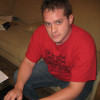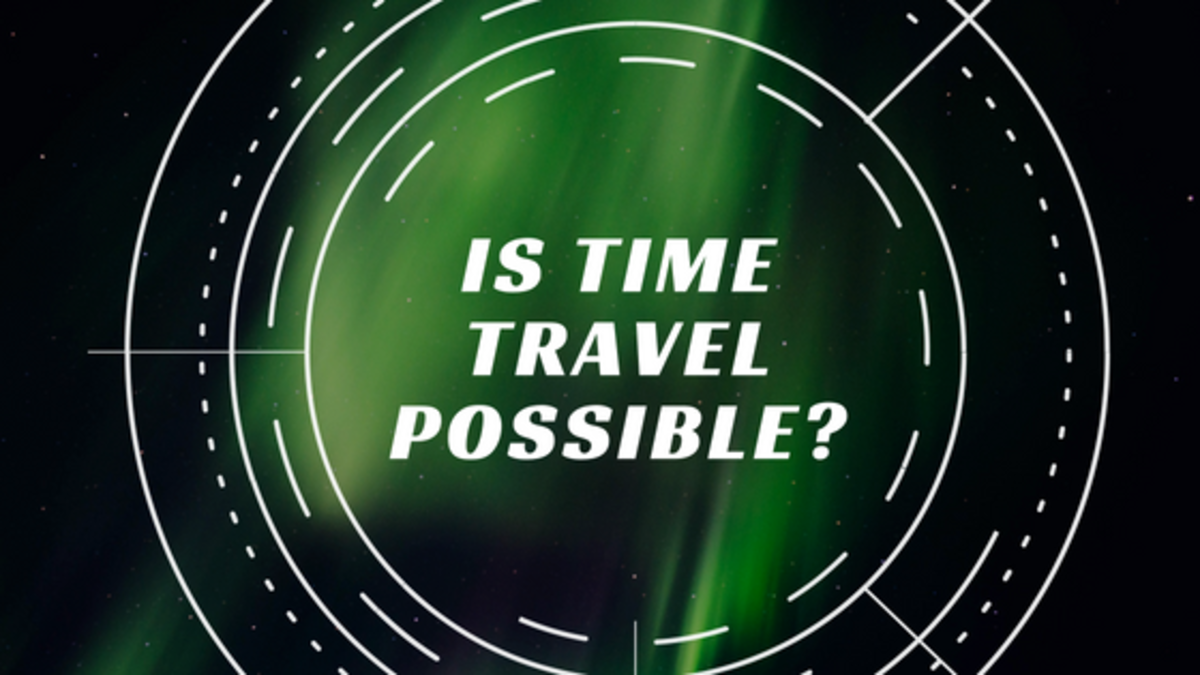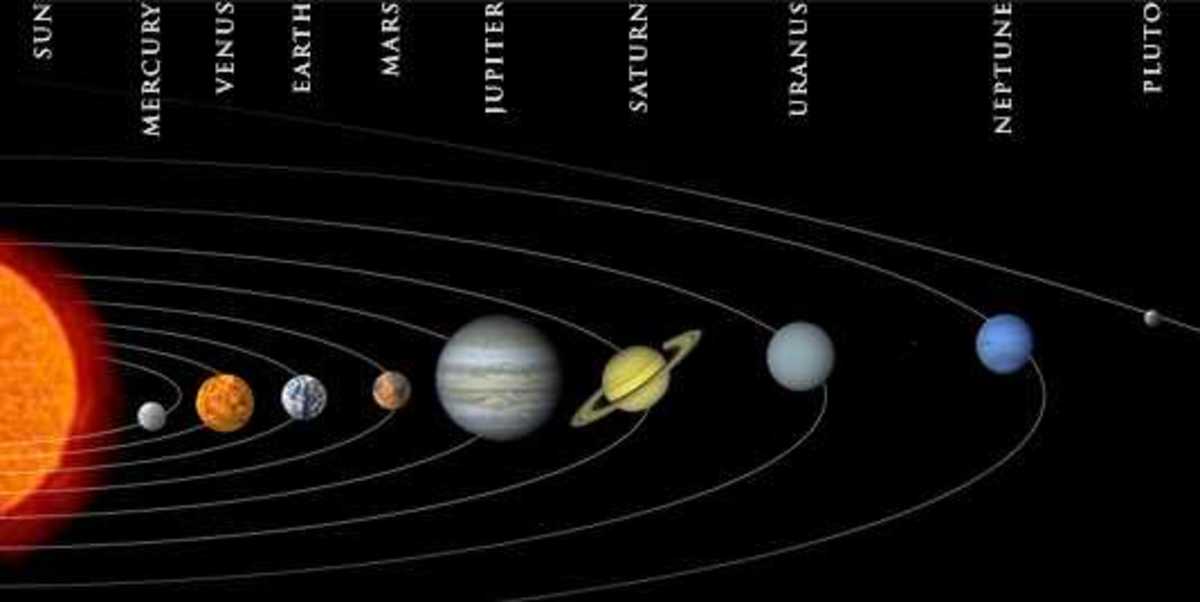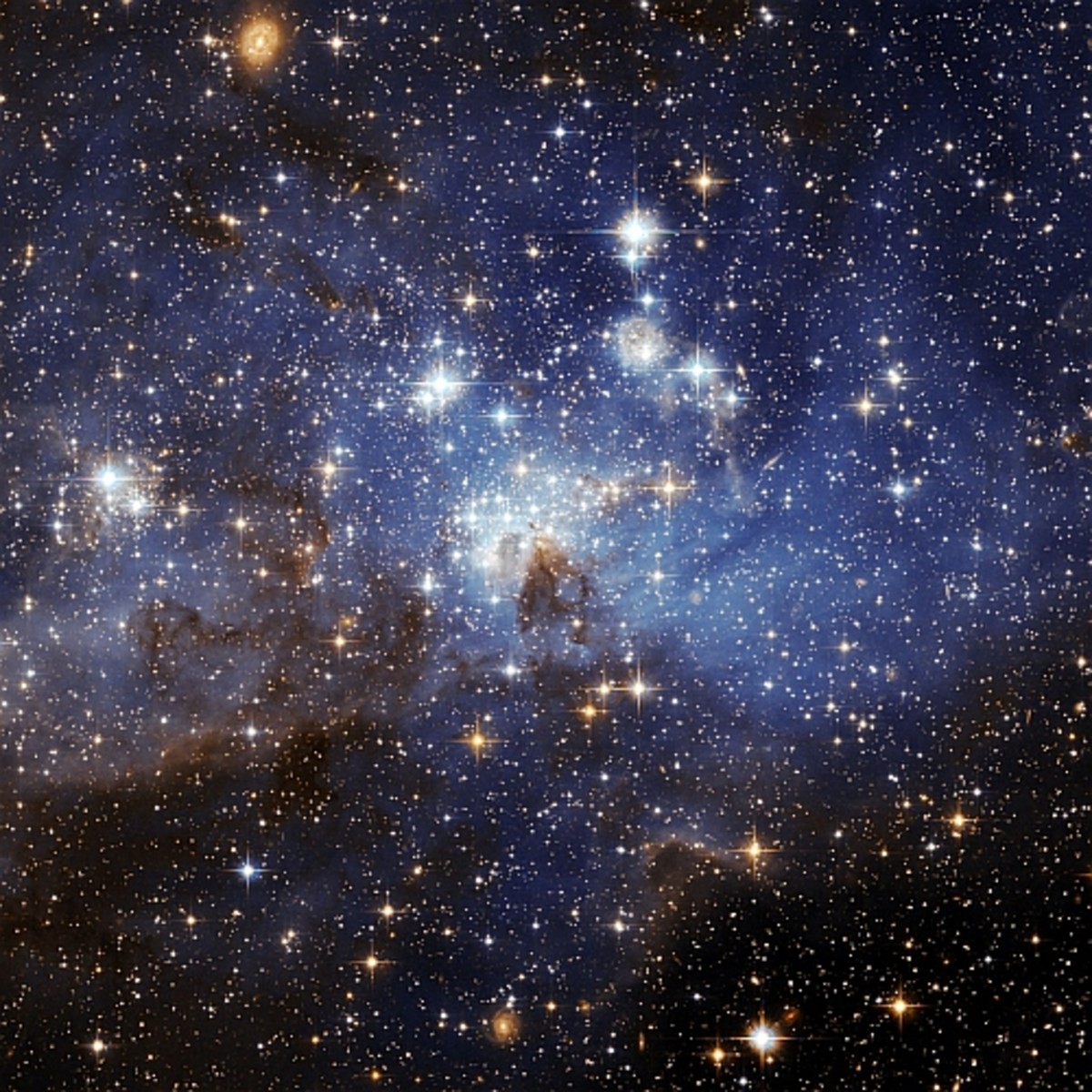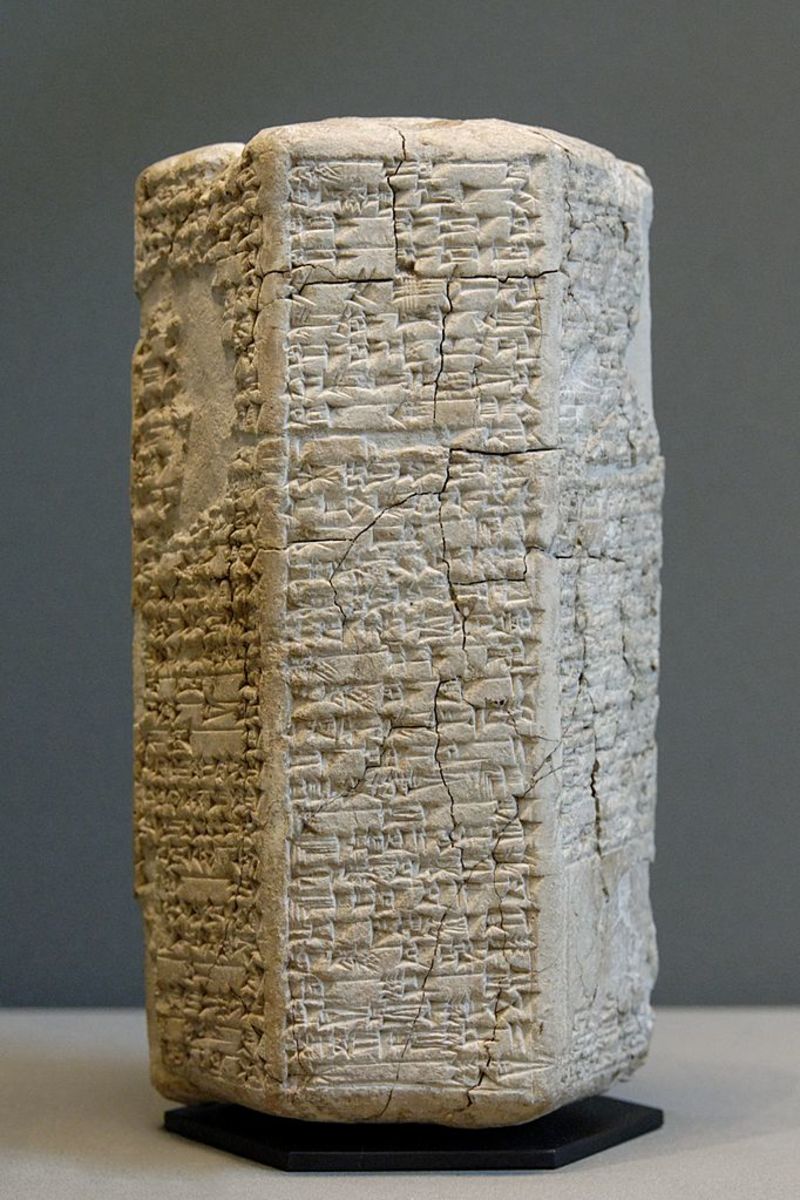Does Time Exist?

The Here and Now
(Please refer to the glossary at the end of the article for help with bold, italicized terms.)
Einstein suggested that time is like a flowing river, with a beginning and an end, a start and a finish. He also argued time is not absolute, but relative.
If time in the Universe is relative absolute, whose clock would be correct and relative to what standard? Might there also be an all-inclusive, universal timeframe that permits individual relative-time perspectives for each observer; one that would prevent potential paradoxes with regard to some relativity models?
How people perceive time is nothing more than a psychological perception of how they experience it, known as the psychological arrow. Relativity dictates that each perspective of time is relative to the observer and depends on where one is and how fast he or she is moving.
The perception of the time-experience is different from one person to the next. The passage of time while you sleep or dream seems different from when you are awake. Restless sleep can distort individual perceptions of time. A person may wake up in the middle of the night to look at a clock and see the time is 12:30. A later glance after waking up a second time might seem as though an hour had passed, only to find it was just 10 minutes.
Drugs are additional factors that affect one’s perception of time. Smoking marijuana greatly impacts the time experience. This is why food tastes so good and sex feels so great. Time appears to pass by slower for individuals under the influence of this drug, so sensations become more pronounced and intense. Ingestion of cocaine has the opposite effect. The impression of time speeds up for those under its influence. (As a side note, I do not suggest anyone experiment with the latter.) Eight hours at the workplace could seem like an eternity, particularly on a bad day. That same amount of time spent at an amusement park might expire in what seems a blink of an eye.
The conscious, biological experience of time may be relative, but the relative perception of it does not define reality or “real-time.” Perspective is meaningless to a universal clock, so how could both experiences exist in the same Universe? There must be a way around this paradox. Some argue this is a perfect example why time, as we measure it, does not exist.
Figure 1
Time vs No Time
Does time really exist or is it merely a 4th dimensional measurement of objects in motion?

The Collective Present
(*Please click on matching diagram link above for a visual.)
The collective present is a universal constant, independent of unique observation or perspective. Everything and everyone throughout the Universe shares a permanent state of present experience no matter their location. That might appear presumptuous since contemporary science argues the elsewhere and strict relative time are tested scientific principles. A few scientists, on the other hand, admit there might be something valid to a universal frame of reference after all.
Without some type of standard, universal time, how would cosmologists from any reference point have the ability to date events in cosmic history with any real meaning? Otherwise, the big bang occurred over thirteen billion years ago and Earth took shape four and a half billion years ago strictly from our perspective. Any relative universal event would be meaningless if there is no universal calendar from which to compare or relate.
The Bonn cesium-beam atomic clock keeps perfect global time on Earth. It is the most precise, known measurement of time. One second equals 9,192,631,770 beats of a cesium atom. But what is this time relative to on a universal scale?
Strict relative time is egocentric, which would be put to the ultimate test if we ever discover a method of quantum tunneling for instantaneous interstellar mobility. Such a discovery is the key to proving the relative measurement of time remains exclusive to the individual observer, and that time as clocks measure it does not exist.
Another theory that might provide additional evidence for a collective present is what Einstein referred to as spooky action at a distance, or quantum non-locality. The theory declares that events from one part of the Universe can affect those from other distant locations and that everything is connected on some quantum level.
Quantum cosmology is doing away with the fourth-dimensional concept of time, eroding it from its equations. Leaving out time makes quantum formulas easier to solve but strict relative ones difficult to impossible. Are quantum physicists as insightful as Einstein or just blindly hopeful? What if measurements of individual relative-time experiences are all tethered to some collective, universal framework? The measurement of each should not eliminate a standard, universal time-experience for all observers, especially if time does not exist in the first place.
Considering there is an overall, non-relative, universal frame of reference, a simultaneous event on a planet orbiting Alpha Centauri should coincide with a current event here on Earth. (Keep in mind, the properties of this reference frame may rely on unique interpretations of quantum physics.) A current event taking place somewhere in the Eastern Time Zone is doing so during the same collective moment as one in Australia. The perspectives are different and so are the clocks, but the present, collective experience is very real. Time may be nothing more than a psychological illusion invented by the biological mind.
Figure 2
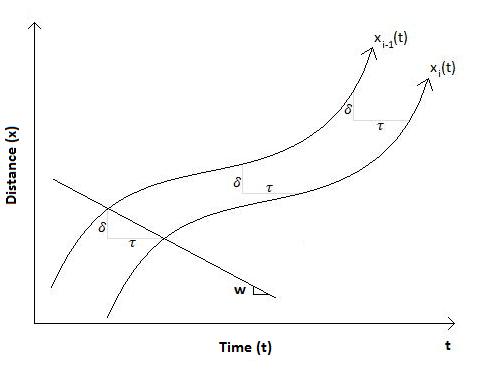
The Continuous Present
(*Please click on matching diagram link above for a visual.)
In his book, The End of Time, Julian Barbour argues why there is no motion or time, that they are nothing more than an illusion of limited senses. Rather, the entire Universe, which he calls Platonia, just is. Every instant of every moment exists in the Now. There is no past and no future. In a 2000 issue of Discover Magazine, he stated, “Our sense of the passage of time is just as wrongheaded as the credo of the Flat Earth Society.” Barbour implies, “Time is nothing but a measure of the changing positions of objects…every possible configuration of the Universe, past, present, and future exists separately and eternally.”[i]
Perhaps Barbour’s most difficult endeavor in support of his theory is modifying Einstein’s theory of general relativity so that both time and distance play no role. He believes the Universe is static for the most part but does adhere to varying degrees of movement from position to position. According to Barbour, the spectral redshifts astronomers observe are not because of their expansion from a big bang, rather from the gravitational effects of neutron stars and black holes.
Barbour’s main argument is that time does not exist; only things that change. He insists, “Time is nothing but change.” Change is the measure of time, not time the measure of change. The unification of general relativity and quantum mechanics, he predicts, will spell the end of time. Since we have to measure objects in motion and put events in perspective using clocks, why not attempt to outline a theory that allows for the big bang, the Now, individual relative-time measurements and experiences, and a universal reference frame with all relative-time experiences tethered to it? Perhaps in the future, physicists will discover a quantum-time equation that allows for all these interpretations without discounting any one of them.
People do not always remember events in the order they transpire, only as their brain interprets them. Recollections one might have of different moments in the Now are not always accurate. For example, a memory of one event that occurred decades ago might appear as though it transpired just last year. The memory may appear real from the individual’s perspective, but is not when it happened according to everyone else’s. Reality is a relative experience that might rely on a collective interpretation from individual beings and from different locations or perspectives at the same time. Quantum time might be the singular method of measuring standard universal events in this manner. Pulsars may be another.
Past events may be viewed, just not experienced, during the present. A home movie is a good example. One from 20 years ago might seem like an actual trip down memory lane, but strictly in the mind. Television sets and DVDs are not, in essence, windows into the past, but illusory productions of light and audio on plastic discs with images and sound in harmonious motion. A video recorder captures a moment as an event in motion and associates it with a particular time-period based on a relative calendar.
Past events occur during the continuous present. Every current event at once becomes a part of past consciousness. Future events are ones that have yet to transpire during the continuous present but do have the potential to occur now. There is no set of existing, past-event moments one could traverse to, only moments that become a part of past-consciousness. Past events, therefore, take place during the past-present so that our biological minds can differentiate between them and place moments in chronological order. The past exists as structured memories of events in the mind, images on television screens, and written documents in history books. Time machines are fictitious constructs from deep within human psyches. They are nothing more than fantasy for macroscopic objects, no matter the uncertain actions and measurements of quantum particles. Potential access to alternate realities likewise occurs during the same convergent moment in the present but on a different plane of existence.
Similarly, the future-present would be a better term for future instances since such events are a potential current experience of the continuous present. Future events have yet to occur in random motion and are not hitherto “carved in stone” or written in history books. That does not mean such events lack the ability to occur this moment, just that the decision to act on them has yet to occur during the immediate, continuous present.
Based on how people measure time, if humans started to evolve a thousand years earlier than it did, the calendar year would not be 3013, only would a current perspective of that technology appear as though it were. The date would remain 2013, but 1,000 years worth of additional technological advancement would make it appear as though it were 3013, strictly relative to our current technological perspective. Had Earth evolved to support life just 1,000 years sooner than it did, we all would be flying around in our cars and discussing the next body part we wish to replace. In that sense, technology would be relative, not time.
The entire, observable, three-dimensional Universe is trapped within the continuous present. A time machine could not travel to a future event since anything anticipated has yet to occur. There exists no traversable future until such events happen in random motion during the continuous present, regardless of any exclusive perspective for one traveling at the speed of light. Time only appears to speed up for the light-speed traveler, but does not with respect to collective reality or outside observers. To someone viewing another traveling at the speed of light, it would appear as though he is standing still, but strictly as a reference frame based on special relativity, not an all-encompassing one based on the Now.
In essence, the brain separates events that have happened, are happening, or will happen by associating different thought perceptions trapped within the continuous present. If anything, time is a constant variable. Just because future events have not yet occurred does not mean they could not conceivably occur during the here and now.
Paul Davies asks, “What sense can we make of physical reality when there is a multiplicity of Nows?”[i] In other words, how can multiple sets of physical realities stemming from relative Nows of different individuals set apart by millions of light years exist? Consider the same question for an individual who alters his relative, physical reality by traveling at high speeds and returning younger than his twin. The person traveling at the speed of light, which looks frozen to everyone else, remains a part of the continuous-present experience. Only the physical effect of gravity and rate of velocity makes the experience appear different for him to outside observers.
How might we make sense of all these relative Nows? There must be a quantum, universal time-standard relative to everything and everyone experiencing present reality throughout the Universe. That experience is different from hypertime, which is a multiverse measurement of time outside any given universe as opposed to quantum universal time measured inside one.
Even Einstein conceded there was something valid to the Now; just that science would be unable to explain it. Relativity is mathematically established and factually correct, but it should not be the exclusive factor considered when contemplating time. In the near future, quantum mechanics might demonstrate that both views are correct, but in their own manner as different measurable variables.
Some commonsense notions independent of relativity and quantum mechanics may be accurate after all. Some logical intuitions about the uniformity of the Universe may prove as viable components for a future quantum-time equation of experienced reality for all worlds.
[i] Folger, Tim, “From Here to Eternity.” Discover (December 2000): pp. 57, 58.
[ii] Davies, Paul. About Time: Einstein’s Unfinished Revolution. New York: Simon & Schuster, 1995, p. 69.
Time Travel
Is Time Travel a Real or Imaginary Concept?
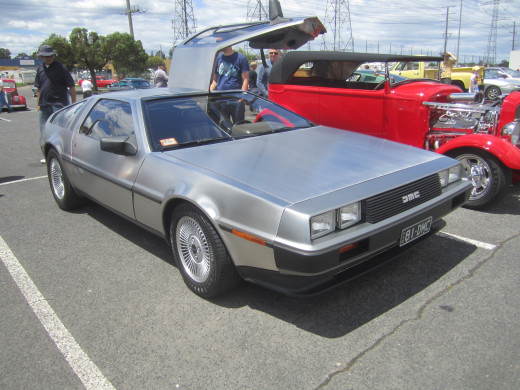
Time Travel
Paradoxes are eminent when one considers time travel. Traveling back in time to kill one’s parents, to relay the secrets of time travel, or to change the entire course of human evolution are a few examples of the countless inconsistencies. Steven Hawking’s chronology protection conjecture aside, time travel is something that belongs in the annals of science-fiction, at least for macroscopic objects.
Kip S. Thorne of CaltechUniversity, in his book Black Holes & Time Warps, explains how a time machine would be possible if the technology existed to create wormholes and travel at near the speed of light.[i] His calculations do make sense on paper, but Thorne concedes the matricide paradox of going back and killing one’s mother before he was born is irresolvable. He provides various reasons to the problem but never any satisfactory resolutions. The chronology protection conjecture does not allow time machines to exist, and Thorne admits to this toward the end of his book.
One idea that may allow for such paradoxes is an aspect of the many-worlds interpretation devised by Hugh Everett and advocated by Oxford physicist David Deutsch. According to the theory, a time traveler may travel back and kill his parents, thus causing space-time to branch off into a new alternate universe that does not interfere with the familiar one. Only within the future of the unfamiliar universe are his parents dead. A method to travel back and then forward to the future of the familiar one is impossible in this time-travel scenario. His parents remain alive in the familiar universe, but traveling back to the alternate future might cancel out his existence entirely since his parents did not survive to give birth.
Some theoretical physicists argue time travel is possible, but that one can travel back no further than the invention of the very first time machine. They somehow work this out on paper, but it appears as nothing more than a fabricated excuse to avoid time-travel paradoxes and keep the possibility of time travel open. A time machine is either a time machine or it is not, no matter when it was manufactured.
Hawking claims the best evidence against time travel is because society has not been invaded by “hordes of tourists from the future.” He claims a wormhole might allow for time travel, but only to the future.[ii] That might sound like a weak argument considering any future time traveler would have to be cautious and adhere to strict protocols of anonymity. There would be no hordes or tourists.
Why should a wormhole be anything more than a tunnel from one part of the Universe to another or to a different parallel universe altogether? The important first step in traversing a wormhole is to develop a way around the effect of overwhelming gravity on the craft. If not, the traveler would never survive to reach his destination, let alone travel to the future. If one does exist, a wormhole should be nothing more than a gateway from one portion of the Universe to another and have no effect on the passage of time.
Gravity and velocity, on the other hand, do have an effect on the time-experience. The closer someone approaches a gravitating body and the higher its gravitational field, the slower time runs. Clocks tick slower at sea level than they do on Mount Everest. Clocks on Mercury tick slower than clocks on Earth since it is closer to the Sun’s enormous gravitational pull. Though Mercury has less gravity than Earth, it travels around the Sun at a faster speed and is deeper in the gravitational field of the Sun, so a person would experience time at a slower rate than on Earth. This effect is called time dilation.
Experiments with elementary particles, in particular muons, confirm the occurrence of time dilation. As these particles travel toward Earth at a constant speed of 99.4% the speed of light, most decay before reaching sea level. By measuring their decay both from a mountaintop and at sea level, more are measured as each hour passes on the mountaintop.
Astronauts traveling away from and back to Earth at a distance of 0.1 light years and going 1% the speed of light would arrive 8.8 hours younger. Special relativity declares one could travel to a star 500 light years away, there and back at 99.995% the speed of light, and visit Earth 1,000 years from now. Upon arrival, that person would have aged only 10 years, but 1,000 years would have passed by for everyone else on Earth.
Problems of causality do not exist in relativity because, in theory, information cannot travel faster than light. A cosmic event taking place 30,000 light years away toward the center of the Galaxy is not in the past because it cannot yet affect life on Earth. Events that happen tomorrow at the center of the Galaxy are not in the future of the present moment on Earth since there is no way Earth can influence them. According to Stephen Hawking, such events are in the elsewhere, because they are in neither the past nor the future. Elsewhere is inaccessible from the here and now. Events occurring now in one’s elsewhere will be in another’s past sometime later and at sometime earlier in their future. It is enough to make one’s head spin.
Hawking defends the notion of the elsewhere and uses an example of the Sun ceasing to shine to prove his point. If the Sun stopped shining, the event would not affect Earth for eight minutes, which is the time it takes for its light to arrive. If a group of astronauts were making solar observations two light-minutes from the Sun, the event would affect them six minutes earlier. It remains in the elsewhere for them until after two minutes, for those on Earth after eight. No matter when it reaches where, one cannot eliminate the notion of cause and effect. In other words, it is coming and there is nothing anyone can do to stop it. That example actually makes the elsewhere look causal. When contemplating quantum mechanics, the elsewhere should apply strictly to parallel universes and other dimensions in hyperspace, not events occurring within the same space-time continuum.
Physicists argue that because information cannot travel faster than light, there is no way to leapfrog it from one reference frame to another. French physicist Alain Aspect performed the EPR experiment during the early 1980s to prove information can be obtained instantly from distant portions of the Universe but cannot be decoded.[iii] It suggests Einstein was wrong about quantum theory and quantum entanglement was thereby proven in the lab. The theory does not allow us to send or transmit data in the same manner. One could send the information, but it would appear as a random message. What does this say about Hawking’s elsewhere? In the future, will principles of quantum entanglement discredit it? (As a side note, if an advanced alien civilization develops a method of decoding random quantum messages, perhaps the EPR transmitter could work both ways.)
Mars is 11 light-minutes from Earth, so there is an eleven-minute period where events on Mars cannot influence events on Earth and vice versa. Martian events lie in the elsewhere of Earth’s present. But what if scientists discover a method of space travel that leapfrogs starships from one location in time and space to another? Theoretical physicists believe it is possible, which would create a loophole around the speed of light for travelers to arrive at their destinations in an instant. Those same physicists argue that while quantum mechanics may allow macroscopic objects to travel around the speed of light to a remote location, it will not allow information. Does that make any logical sense? If information is contained within the macroscopic object of a spacecraft, and it can quantum-tunnel, is that not the same as sending the information directly? Just add a text message to your smartphone, send it through a quantum tunnel or wormhole to someone on the other side of the Galaxy, then have him respond and send it back. Problem solved.
Past events are only perceptible during the present, and future events are never observable until after they occur. Looking up at a starry night is like looking into the past, but no more than watching a video recording. Light emanating from a star left the perspective of its system long ago. From the perspective of Earth, the image we have of it is not an accurate rendition of what is occurring there now. The star may have gone supernova long ago and the light from that event has yet to arrive at our limited frame of reference.
Past universal events have happened heretofore and will never occur again in the same manner. One may view or witness the light waves of a past event after it reaches a particular perspective or after it is recorded onto a digital device, but that is the only possible experience of that instance during the continuous present.
The holographic principle is another theory that might prove relative experiences of time are nothing more than the illusion of how something is observed, not how it is occurring. The effects of light, or photons, near a gravitating body create illusions of differing time frames. A black hole is the best example. According to Leonard Susskind, Professor of Theoretical Physics at Stanford University, a black hole is like a high-speed shutter camera making it appear as though time slows down the closer you approach it. He believes black holes do not destroy information but scrambles it so reality appears different. To him, this is the singular explanation to resolve the paradox that arises between the perspective of a person inside a black hole to that of someone else outside looking in.[iv] Likewise, this principle applies to the perspective of someone traveling at the speed of light in contrast to another standing still.
Imagine having the capability of seeing a mirror image of Earth a billion years into the past. If astronomers had telescopes powerful enough to discover such a holographic-like reflection, they could witness past images of Earth during the present. However, the witnessed events would not be taking place in some simultaneous elsewhere. The particular moment of that event is only observable, not something we could experience, even if we had a wormhole to get there in an instant. After we arrived, we would find ourselves in a distant part of the Galaxy with Earth nowhere in sight. There are not multiple Earths of different time-periods floating around at different coordinates throughout the Universe, only possible holographic images of them we could observe from our perspective sometime in the future. Based on this logical-thought experiment, quantum theory may, over time, erode any meaningful elsewhere concept.
The energy and motion put forth by any future event on Earth does not yet exist and will not until it occurs in random motion during the future-present. In this instance, one could never experience future events during the immediate present, but strictly as they transpire collectively within the future-present. There exists no past or future, only events that happen throughout the Universe in continuous, random motion during the Now. The lone exception might be if we are all living out our lives in a virtual-reality program constructed by an advanced civilization, but that is a different argument entirely.
[i] Thorne, Kip S. Black Holes & Time Warps: Einstein’s Outrageous Legacy. New York: W.W. Norton & Company Inc., 1994.
[ii] Hawking, Stephen. Black Holes and Baby Universes. New York: Bantam Books, 1993, p. 103.
[iii] Jaeckel, Ted. The God Particle: The Discovery and Modeling of the Ultimate Prime Particle. Boca Raton: Universal Publishers, 2007, pp. 92-94.
[iv] Susskind, Leonard. An Introduction to Black Holes, Information and the String Theory Revolution. HackensackNJ: World Scientific Publishing Co., 2005.
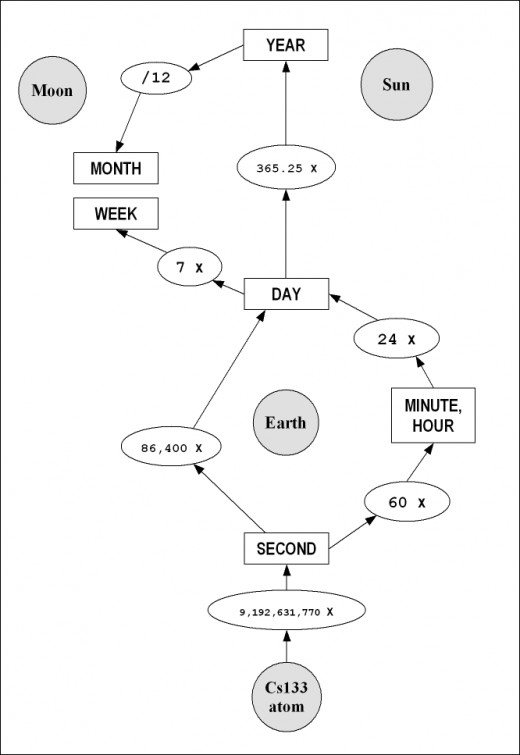
Individual Displacement Paradox
Perhaps a past event on Earth is observable during the collective present without the aid of a recorded document. Previous events from other star systems are visible every time one looks up at the night sky, if only the former light waves that emanated from them millions of years ago. Planetary events of other star systems are not observable in this manner due to a lack of better telescopes.
Imagine owning a futuristic telescope capable of viewing people on Earth from the outer edge of the Solar System and a quantum starship to get someone there and back in an instant. The spacecraft is equipped with a gravity amplifier designed to bend space-time and send its occupant anywhere in the Galaxy within a fraction of a second. Such methods are exempt from relativity since they produce no linear effect on the space-time continuum. An occupant could travel to anywhere in the Galaxy, perhaps Universe, and back instantaneously. The time elapsed until the occupant decided to return home would be the same amount of time that passes on Earth.
In the future, NASA sets up the experiment in three stages. The first is to propel the craft and occupant to the outer edge of the Solar System. The vehicle reaches its target at about the same instant it left. The continuous space-time of its destination replaces the space-time of the original position of origin.
The occupant looks into the special telescope after arriving at the edge of the Solar System and sees himself back on Earth a few hours prior to takeoff. (Light takes that long for it to travel across the entire Solar System.) He is standing on the launch pad, waving up at the sky to himself just before takeoff. He predetermined at this precise instant and location, he would be looking back at himself through the telescope. The light from Earth’s present perspective has not yet reached that far out and will not for another few hours. This does not mean his body and consciousness are on the launch pad and floating around at the edge of the Solar System at the same time. This would be impossible not only because of individual, conscious displacement, but because it is highly illogical. Shaking hands with himself after he returns is an obvious paradox with no place in the real world.
After viewing the calculated moment for a few minutes, the occupant returns home with the experimental evidence. From the relative perspective of the people at the launch site and the perspective of the astronaut, the trip took no more than a few minutes. Just because the light from that event had yet to reach that particular perspective of the Solar System does not mean when he returns it will be to the past, or to the future for that matter.
If the trip were possible only in a linear manner from point A to point B at just under the speed of light, the causality of relativity instead would apply. The occupant would return home at some point in Earth’s relative future. He would appear to be moving very slowly to everyone on Earth looking up at him. Quantum mobility, on the other hand, would be exempt from such relative paradoxes.
Even so, he is able to travel to the future strictly from his perspective. Only to him would the trip appear instantaneous. To everyone else, he would be creeping through space. So it is a basic form of time travel, strictly to the future-present and only from his limited, “frozen-in-time” perspective.
Eliminating linear travel by warping a portion of the space-time continuum is the necessary ingredient scientists need to prove the existence of a standard, cosmic universal time (CUT). The entire Universe experiences a CUT relative to all observers. An alien civilization one million light years away experiences the same collective present as Earth regardless of causality or elsewhere. Their life experiences are unique due to independent technological advancement, uncommon biology, and disparate number of planets orbiting their sun, but they still share the same CUT as all other worlds throughout the entire Universe.
Only if science discovers a method to bend the space-time continuum for faster-than-light travel and most aspects of quantum theory are resolved will the hypothesis then become verifiable. Conversations with distant alien civilizations, provided we could locate them, would become a part of that reality. If macroscopic objects can travel around the speed of light, then so can information since a recording device could be sent in the same manner.
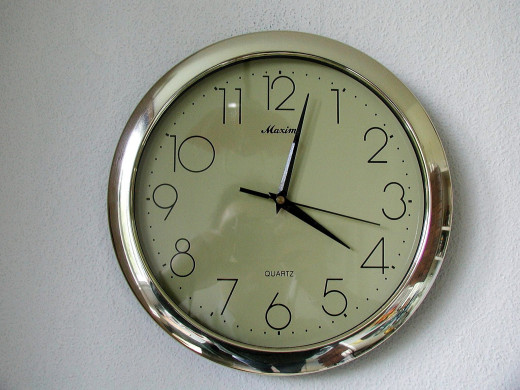
Does Anyone Have the Time?
Time is a biological construct measuring the entropy of random events in motion during the continuous present. Time “travels” in a linear manner from point A to point B but is experienced as a constant, all-inclusive variable. The limits of current scientific theory are the main reasons most physicists refuse to accept any model of the Now. After science and technology evolves to incorporate quantum tunneling, the theory of relativity will then require an asterisk. Special relativity is a sound theory but is limited to specific relative experiences. An all-encompassing, universal experience is the only model of true reality.
The idea of a time machine is pure fiction and has no basis in the real world, aside from a good science-fiction story. All have fantasized of going back in time to reminisce or change bad decisions once made, but time travel for macroscopic objects does not mesh with reality. Most theoretical physicists believe quantum mechanics will allow for time travel, but a full understanding of all its principles, over time, will erase it from their equations entirely.
If scientists can get past the calculations of exclusive relative time, quantum physics may take center stage. Julian Barbour’s theory of the Now may hold the key, so physicists must find a way to incorporate it into their relative equations. Perhaps a combination of the competing theories is the key to simplifying some of the infinite equations found in quantum physics.
The here and now is all that ever was, is, or will be for any given parallel universe or on any given plane of alternate reality within each universe. While each parallel universe will harbor an exclusive, contained reference frame of measurable time, any alternate universe branching from it will relate to one another. If the appearance of an alternate universe resulting from a specific wave function in this Universe must wait to exist until after an alternate decision is made, that universe is directly related and the measured date in each should coincide. At the same time, a parallel universe branching from this one could not exist until the moment a new black hole forms. Its reference frame of time will be different since the time-experience in any new universe at first runs faster. However, an inference of how much time has passed in any new universe the moment a specific black hole is born in this one could conceivably be calculated.
Another point to consider is that some of the quantum branching of infinite many-worlds may attribute to virtual-reality realms created in some supercomputer program by a civilization that either helped create the Universe or were one of the first biological beings in it to evolve. Our quantum twins could be living out their lives in many virtual-world programs all running at the same time. In that sense, time would be a measurable concept and would have an arrow to it, but that is a topic for a different article...
GLOSSARY
(* Terms devised and/or uniquely defined by the author)
Chronology Protection Conjecture Theory endorsed by Stephen Hawking in that time travel is allowed, but strictly at the subatomic level. The various paradoxes that would ensue prevent time travel for macroscopic objects.
*Collective Present Idea that time does not exist and all potential beings throughout the entire Universe share in a collective, present experience of three-dimensional reality. This interpretation of the Now allows for individual relative experiences and holographic interpretations of time dilation where extreme gravity is present, but they all remain tethered to the collective-present reality. See also continuous present.
*Continuous Present Similar to Julian Barbour’s interpretation of the Now. It is the continuous, general perception of the Universe measured by all potential beings throughout the entire three-dimensional expanse. This concept denounces Stephen Hawking’s interpretation of the elsewhere, or idea remote perspectives have no causal influence on local ones. In principle, these experiences have no causal relation to one another but would for any civilization capable of bending the space-time continuum. Though different relative perspectives of the time-experience are allowed within the continuous present, all beings share an overall universal perspective relative to all observers. See also collective present.
*Cosmic Universal Time (CUT) An all-encompassing perspective that applies to macroscopic objects and is relative to all observers. Like the continuous present, it is the universal perspective of time from the point of view of all observers. It allows for individual, relative timeframes as measurable events but remains the prevailing frame of reference for all potential observers at any point in the Universe. See also continuous present and collective present.
Elsewhere Stephen Hawking’s idea that remote events have no causal effect on local ones. In other words, something happening on a planet toward the other side of the Galaxy cannot, in any way, relate to events happening in our corner. Attempting to compare or associate the viewpoints is moot. The passage of time from our perspective is different from theirs, so there is no possible correlation. This book argues against some aspects of that interpretation in that it postulates there may be relative, elsewhere time perspectives but also an all-encompassing, universal one relative to all observers from all perspectives. The differing localized ones are based on the holographic effects of light and gravity, not time.
Entropy In thermodynamics, it is the second law describing how it must increase over time. Entropy is the progression of disorder from a perfect or ordered state. An apple endures entropy the moment it is picked and continues decaying until its energy is consumed or withers away. Its energy remains present in one form or another but in a different, disordered state.
EPR Experiment Albert Einstein, Boris Podolsky, and Nathan Rosen’s original thought experiment arguing against aspects of quantum mechanics. The 1935 paper points out inadequacies of quantum theory but was based on inaccurate results. The experiment was performed during the 1980s by French physicist Alain Aspect and shows spooky action at a distance, or quantum entanglement, indeed occurs in quantum mechanics.
*Future-Present The anticipated perspective of the future from the here and now. In all actuality, the future is experienced during the present. Since there is no linear time, all anticipated future actions occur during the future-present. Time is a human construct developed to measure the psychological arrow of time and place events as they transpire in chronological order. It is the anticipation of future actions that occur strictly during the present. The future has yet to be established, so there is no physical date one could travel to through time. The experience of it has yet to occur in random motion during the continuous present.
Holographic Principle Idea the entire Universe may be one big holographic projection, which is how it stores information throughout. This could explain why there are differing relative reference frames of reality near a gravitating body. For example, someone that fell into a black hole will experience her demise right away, but an observer from outside it will witness her “frozen in time.” This principle helps explain many ideas outlined in this book, in particular those in contrast to some aspects of relativity and the elsewhere.
*Individual Displacement (ID) The concept of individuality by way of mind, consciousness, and geographic location, from one person or being to the next. It separates one person from another and explains why you are you instead of someone else. Also referred to as the individual-displacement paradox (IDP) since the same consciousness cannot reside in more than one body at a time, regardless of advances in cryobiology. It may be a quantum function.
Matricide Paradox A time-travel, thought-experiment paradox that prohibits someone from traveling back and killing her mother. The solution is that doing so would create an alternate timeline where she could not travel back to the original. The trip back would be to a future where her mother is dead, but she remains alive in the original. If her daughter was able to travel back to the future of the original timeline, it might cancel out her existence entirely. Such paradoxes provide evidence time travel is not possible and may lend credence to the idea that time does not exist.
Now, The British physicist Julian Barbour’s view that time is an illusion, and reality is nothing more than a collection of moments in the Now. Change and motion create the illusion of time as we measure it. Time does not exist, only things that move and change within the familiar framework.
*Past-Present Like the future-present, it is an extension of the collective-present hypothesis. An interpretation of the past existing with the present simultaneously. There is no time, only the measurement of it to differentiate between various events in motion and to put them in chronological order. Everything takes place within the Now since time is a human construct. Past events exist strictly in our memories and recollections. There is no physical, traversable past, only reflections of it in our minds and on recorded devices. Since light from a distant star takes so long to get here, we see it as it was in the past. That does not mean we are looking into the past. What the star looks like from an alien’s present perspective is different from how we would see it from ours, but that is nothing more than a visual response.
Platonia In Julian Barbour’s book, The End of Time, it is the theoretical, timeless realm that includes every moment of universal history, all occurring within the present, or Now. A postulate to show time does not exist, and all events in the Universe occur during the ever-present Now.
Psychological Arrow Our psychological perception of the passage of time. It is how we measure and experience it in our minds but may be no more than an illusion. Time may not exist at all though is a necessary measurement in physics. The arrow of time is crucial for placing events in chronological order as they transpire.
Quantum Entanglement The effect of multiple particles sharing correlated properties across great distances. This shared state is indefinite until measured. After two particles come together and are separated carefully, they share corresponding properties with each other to include those on opposite ends of the Galaxy. Albert Einstein called it spooky action at a distance. In theory, we should be able to learn about events occurring on the other side of the Galaxy without ever having to travel there. Decoding that information on our end may be impossible to foreseeable science. Future applications, if possible, would involve teleportation of macroscopic objects from one location to another.
Quantum Non-Locality Non-locality relies on the theory of quantum entanglement. For the purposes of this book, they are pretty much the same principle. See also quantum entanglement.
*Quantum Universal Time If time is comparable at the quantum level and is not strictly relative, then all perspectives throughout the Universe would share some standard of quantum universal time. See also cosmic universal time.
Special Relativity Einstein’s theory that, in the absence of gravity, all scientific observations are the same for all observers. Special relativity is basically general relativity minus gravity. It is a special case of general relativity based on the same principles. If two people are traveling at different speeds in vacuum, they will make different measurements with respect to each other even though the speed of light remains constant. General relativity deals with the properties of curved space-time and the gravitational influence of relative reference frames and special relativity the speed of light and either relative or non-relative reference frames. The differences can be somewhat tedious. See also general relativity.
